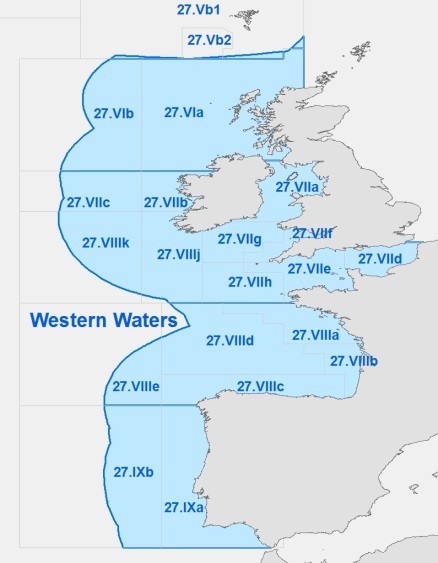The Commission has submitted to the European Parliament and the Council a proposal for a multi-annual plan for some demersal fish stocks, including deep-sea stocks in the Western Waters. Sea bass is on the list of species covered by the plan but only for the northern part of the waters.
The proposed plan aims at simplifying fisheries management by replacing the already existing regulations covering different species by a unique regulatory framework.
Commissioner for the Environment, Maritime Affairs and Fisheries Karmenu Vella stated that “This plan will enable us to continue the positive development towards sustainable fisheries, with solutions that are adapted to the specific need of the fishermen."
The proposal will now be discussed and amended by the European Parliament and the Council of the EU over the next months.
Recreational fisheries
 The plan includes a provision concerning recreational fisheries; Article 9(4): “When scientific advice indicates that recreational fisheries have a significant impact on the fishing mortality of a particular stock, the Council shall take them into account and may limit recreational fisheries when setting fishing opportunities in order to avoid exceeding the total target of fishing mortality.”
The plan includes a provision concerning recreational fisheries; Article 9(4): “When scientific advice indicates that recreational fisheries have a significant impact on the fishing mortality of a particular stock, the Council shall take them into account and may limit recreational fisheries when setting fishing opportunities in order to avoid exceeding the total target of fishing mortality.”
The phrase “shall take them into account” is explained in more detail in recital 22: “Where the Council takes into account a significant impact of recreational fisheries in the framework of the fishing opportunities for a certain stock, it should be able to set a TAC for commercial catches which takes into account the volume of recreational catches and/or to adopt other measures restricting recreational fisheries such as bag limits and closure periods.”
This possibility to legislate recreational fishing is not new. The Control Regulation’s Article 55(4): “Where a recreational fishery is found to have a significant impact, the Council may decide (..) to submit recreational fisheries as referred to in paragraph 3 to specific management measures such as fishing authorisations and catch declarations.”
The new thing is that it is made explicit and obligatory that the Council shall take the recreational catches into account (for certain stocks) for the Council to “...be able to set a TAC for commercial catches which takes into account the volume of recreational catches...”
This is good news. The EAA has for years pushed that the recreational catches should be estimated/sampled and thereafter removed from the TAC before the remainder is allocated to the Member States and their commercial fisheries entities.
More and better data needed
The EAA wants the EU to take some additional steps, to extend the provisions to include more stocks than those where recreational fisheries has “a significant impact”. At present two recreational fisheries are deemed to have “a significant impact” on stocks, namely sea bass and Western Baltic cod. In both cases the recreational fisheries impact was not significant just a few years ago. Poorly managed fisheries brought down the biomass to a point where also recreational fisheries suddenly had “a significant impact” no matter that the recreational sector’s total catches stayed the same or declined compared to previous years. This crisis situation could have been avoided with more and better data provided earlier on, better control and enforcement and if the scientists’ advices had been followed more strictly.
Recreational catch data for other stocks than those overfished already would help managers to be aware earlier of needs to adjust management. More and better data, including trend data, are also required to provide our decision makers with information needed for them to be able to make fair and equitable decisions. We don’t want to see more sea bass and Western Baltic cod alike cases in future where too little is done for far too long, and unfair management measures put in place doing harm to recreational angling and the angling dependent businesses.
The plan does not include southern bass
Last December, the EU fisheries Ministers agreed that catch and release should be the rule all year in northern waters while anglers in the Bay of Biscay could keep three bass per day. The EAA has argued for a long time that management measures ought to be the same for both northern and southern bass fisheries. We would like to see a bag-limit for northern bass reintroduced instead of the present retention ban. We hope new scientific data, to be published in June, will show that this can be done without compromising the health of the bass stock. And we hope the EU at long last will increase the minimum landing size to 42cm for commercial fisheries in south – as it is in north and as it is for anglers in both north and south.
The proposal is open for public feedback until the 21st of May. The public consultation is available here.
More information is available here.
Access the proposal here.